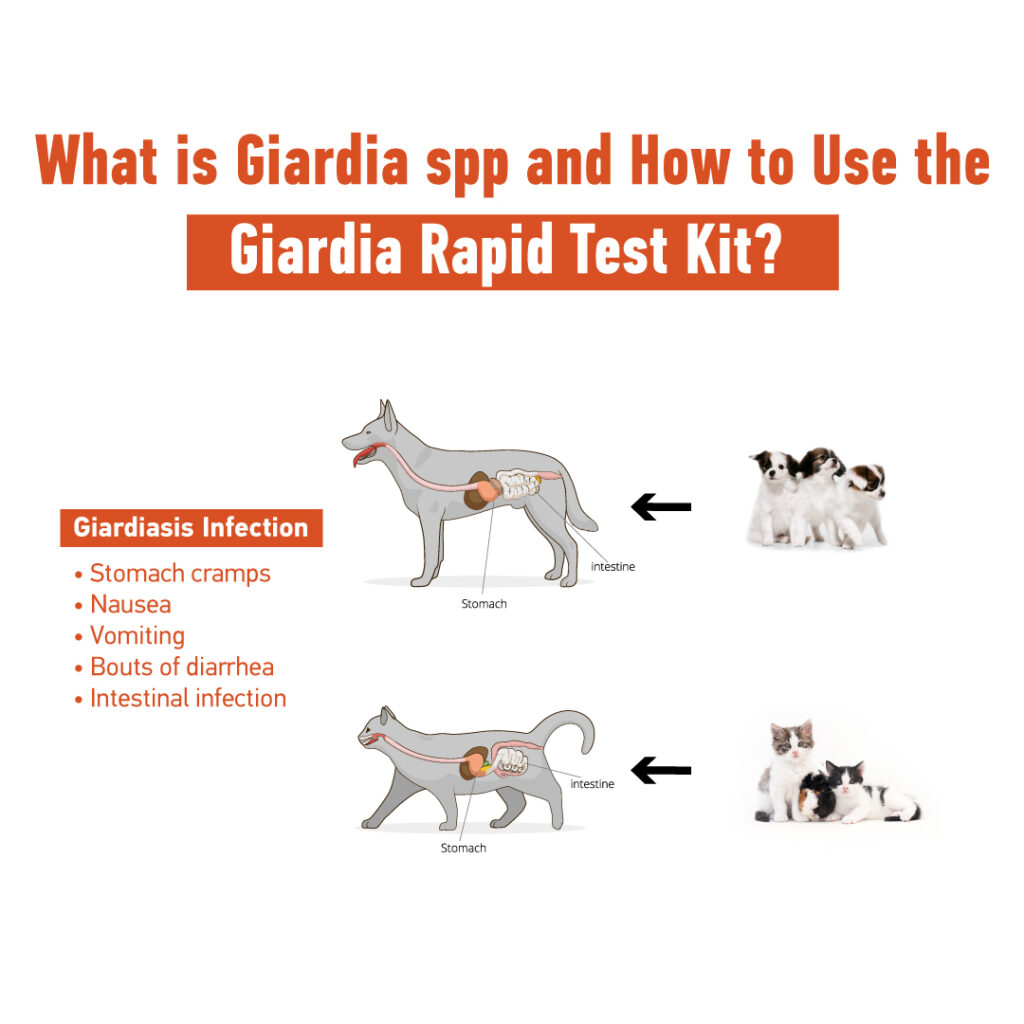Giardia spp., a microscopic parasite commonly found in water sources, has become a growing concern due to its ability to cause gastrointestinal infections in humans and animals. Recognizing the need for efficient and accurate detection, the development of the Giardia rapid test kit has revolutionized the diagnosis of this parasitic infection. This blog aims to provide a comprehensive overview of Giardia spp., shedding light on its characteristics, symptoms, and transmission. Furthermore, it will delve into the significance of the Giardia rapid test kit, explaining its working mechanism, benefits, and step-by-step instructions on how to utilize it effectively. By gaining a deeper understanding of Giardia spp. and the associated diagnostic tool, individuals and healthcare professionals can take proactive measures to prevent the spread of this infectious parasite and ensure early intervention for affected individuals.
What is Giardia spp.?
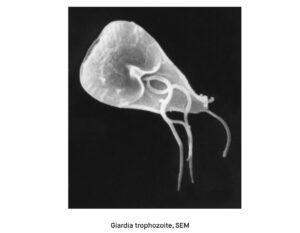
Giardia is a species of anaerobic flagellated bacterium that causes giardiasis and colonizes and reproduces in the small intestine of an animal and is a genus of anaerobic flagellated protozoan parasites of the phylum Metamonoda Giardia were first described by the Dutch microscopist Antonie van Leeuwenhoek. They switch between swimming trophozoites and infectious, resistant cysts during their life cycle [1]. Early and accurate detection of Giardia spp. is crucial for effective treatment and prevention of further spread. Diagnostic methods include microscopic examination of stool samples, serological tests, and the use of rapid test kits designed specifically for detecting Giardia antigens or genetic material. These tests enable healthcare professionals to identify the presence of Giardia spp. quickly and accurately, facilitating appropriate medical interventions and preventive measures.
Giardiasis in Animals
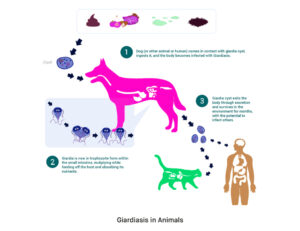
Giardiasis is an intestinal infection. Most infections are caused by G. duodenalis, a species complex of different genotypes with host specificity; production animals, companion animals, and wildlife can all be infected. In general, symptoms of giardiasis include abdominal discomfort and vomiting. Giardia infections can differ between animal species. Giardia infection in cats or dogs can be without clinical signs. It may only show up during routine fecal tests. It can also be associated with chronic diarrhea or steatorrhea in kittens and puppies.
It can cause weight loss in animals. Giardia infection can also be found in apparently healthy animals as a result of clinical tests. In addition to cats and dogs, this infection can cause unresponsive diarrhea in calves and production animals. In such animals, the infection leads to reduced feed efficiency and subsequent weight gain [2].
The diagnosis of giardiasis, the infection caused by Giardia spp., is of utmost importance due to early treatment, preventing transmission, differentiating from other conditions, public health surveillance, identifying asymptomatic carriers, and travel and international health consideration.
What is the Giardia Rapid Test Kit?
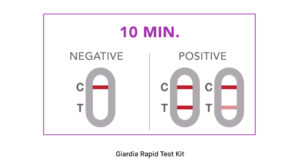
The Giardia Rapid Test Kit is a diagnostic tool specifically designed for the rapid and convenient detection of Giardia spp. antigens or genetic material in biological samples, such as stool samples. This test kit offers a simple and efficient method to identify the presence of Giardia parasites, enabling timely diagnosis and appropriate treatment.
The Giardia Rapid Test Kit typically consists of several components, including test cassettes, sample collection devices, and reagents. The test cassette contains a pre-coated membrane with specific antibodies or probes that can bind to Giardia antigens or genetic markers. The sample collection device is used to collect the biological sample, usually a small amount of stool, and mix it with the provided reagents.
The Giardia Rapid Test Kit offers several advantages, including rapid results within a short timeframe (usually within 15-30 minutes), ease of use, and high accuracy. It eliminates the need for specialized laboratory equipment or extensive sample processing, making it suitable for use in various healthcare settings, including clinics, hospitals, and field settings where immediate diagnosis is crucial.
It is important to note that while the Giardia Rapid Test Kit provides a quick and convenient method for preliminary diagnosis, confirmatory testing, and further analysis may be required for definitive diagnosis and comprehensive evaluation of the infection. Healthcare professionals should follow the instructions provided with the test kit and interpret the results in conjunction with the individual’s clinical presentation and other diagnostic findings to ensure accurate diagnosis and appropriate management of Giardia spp. infections.
How to Use Giardia Rapid Test Kit?
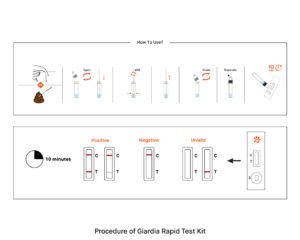
First, you need to collect a small amount of fresh stool samples using the sample collection device provided with the kit, ensuring that the sample is free from contamination and placed into a clean container if necessary. After that, mix the collected stool sample with the provided reagents. Then open the test cassette and carefully apply the prepared sample onto the designated area or well on the cassette. After the specified development time, examine the test cassette for the appearance of colored lines or signals. The presence of distinct lines in the designated region indicates a positive result, indicating the presence of Giardia antigens or genetic material. If no lines appear, it suggests a negative result.
Remember that while the Giardia Rapid Test Kit can provide initial indications of infection, confirmatory testing, and professional evaluation are essential for accurate diagnosis and appropriate management. If you have any doubts or concerns regarding the test procedure or results, consult a healthcare professional for further guidance and advice.
REFERENCES
[1] Stanley L. Erlandsen; Ernest A. Meyer (1 March 1984). Giardia and Giardiasis: Biology, Pathogenesis, and Epidemiology. Springer. pp. 131
[2] Robertson, L. “Giardiasis in Animals”. MSD Vet Manual. https://www.msdvetmanual.com/digestive-system/giardiasis-giardia/giardiasis-in-animals Oct 2022
Figure 1: http://phil.cdc.gov/PHIL_Images/8698/8698_lores.jpg
Figure 2: https://www.beckeranimalhospital.net/blog/giardia/
Figure 3: https://primalabsa.ch/en/home/pet/giardia-pet-test/
Figure 4: http://www.biozek.com/giardia-lamblia-rapid-test-cassette/
